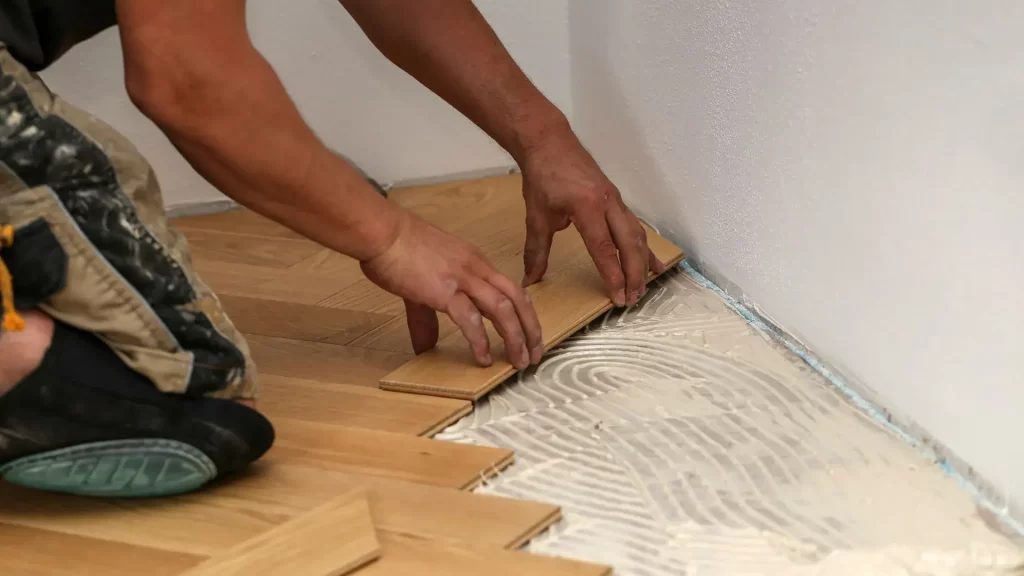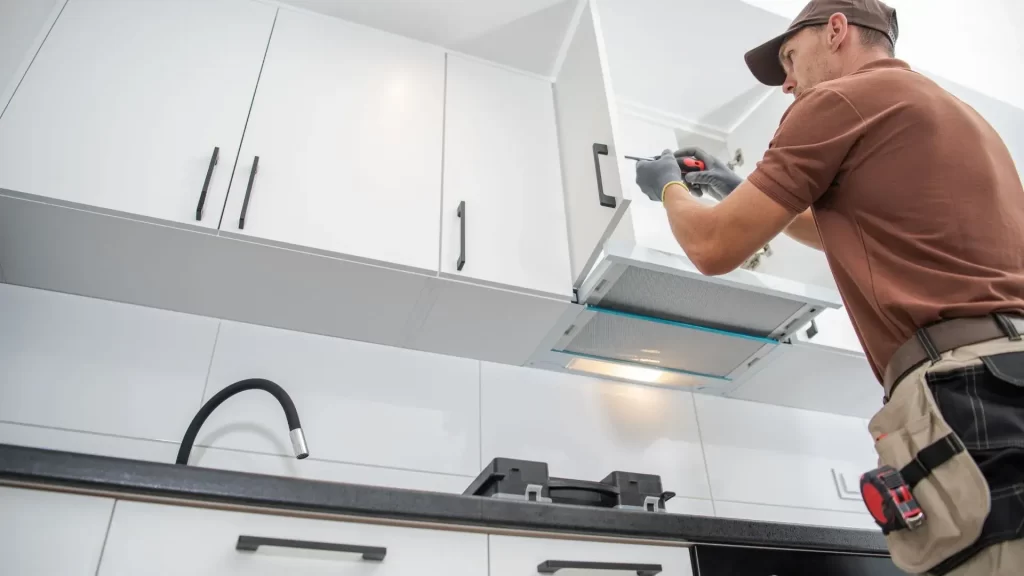Choosing the order of installation for cabinets and flooring is a crucial decision when starting a kitchen or home renovation project. The order in which these two crucial components are put in place can profoundly influence both the visual appeal and practicality of your living area. Should you prioritize the practicality of hardwood flooring or the style and storage offered by cabinets? In this blog, we will answer the question of whether to install cabinets or flooring first, consider the factors that influence this decision and offer insights to help you make the best choice for your home improvement project.
When Should You Install Flooring First?
The question of whether to install flooring first or tackle other renovation tasks beforehand is a common dilemma faced by homeowners. To shed light on this matter, let’s delve into the factors that could guide your decision.
In situations where design constraints arise, requiring necessary adjustments to accommodate non-standard appliance heights or address construction irregularities, it can prove beneficial to adopt a strategic approach by installing the wood flooring before placing appliances, kitchen cabinets, or the kitchen island. To effectively mitigate the impact of height discrepancies caused by these irregularities, it is advisable to explore flooring alternatives with increased thickness surpassing the standard measurement of 2 inches. One practical approach to ensuring a consistent height throughout the flooring while maintaining the structural integrity is to integrate plywood risers behind the cabinets and appliances.
Installing kitchen cabinets after the kitchen flooring offers several advantages, such as the correction of construction flaws, the assurance of standard countertop height, and minimizing expenses. However, this approach has its drawbacks, including the potential for floor damage, the need to relocate cabinets if the floor expands and contracts, and some waste of flooring material. It’s essential to weigh these pros and cons to make an informed decision that best suits your specific kitchen design and construction needs.

When Should You Install Cabinets First?
In most cases, to make sure the installation process goes smoothly and efficiently, it’s a good idea to install your cabinets and kitchen islands before you lay the flooring. This approach helps you create a well-organized and visually pleasing kitchen, where everything fits together nicely, and it minimizes the risk of damaging your flooring during the installation.
By following this common practice, homeowners can maximize both the practicality and the beauty of their kitchen spaces, which results in a unified and aesthetically pleasing environment. This method ensures that your cabinets, kitchen island, and flooring all come together seamlessly, making your kitchen design look like it was carefully planned.
This approach comes with several advantages. It allows you to use your flooring materials more efficiently, making sure they don’t go to waste. It also levels out the floor, reducing the chance of trips or uneven surfaces. Plus, it lowers the risk of accidents during installation, which is a significant safety concern.
However, there are some downsides to this method. It means you have less flexibility in how you arrange your kitchen layout, which might not be ideal for everyone. Also, it can take more time to complete the installation this way, so you’ll need some patience. Lastly, it could potentially increase the overall cost of the project, so it’s essential to weigh the benefits against the drawbacks before deciding which approach to take.









